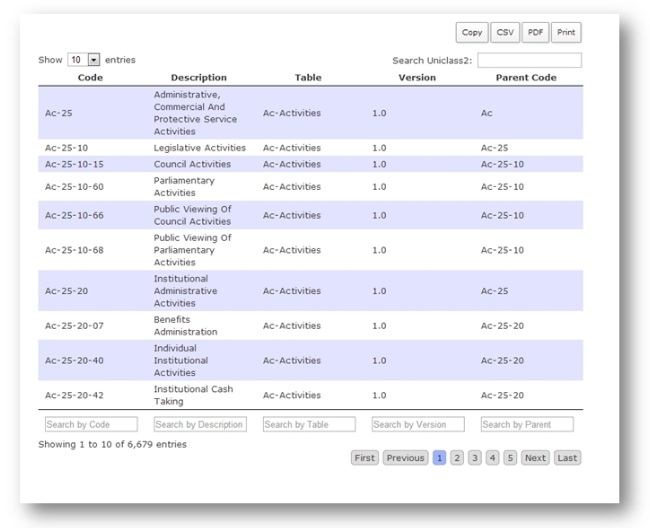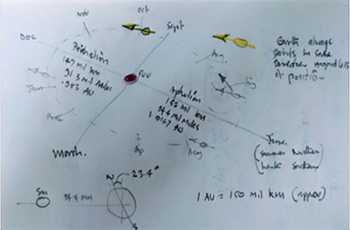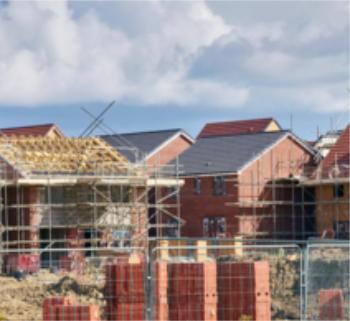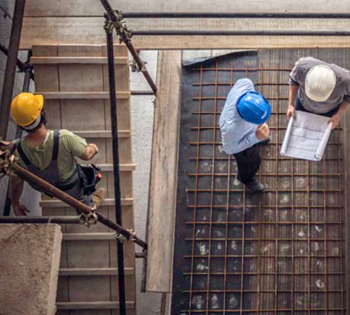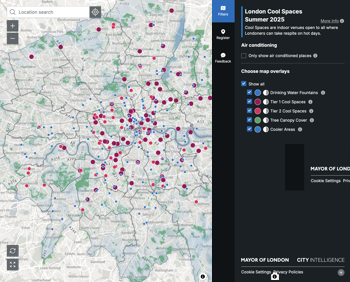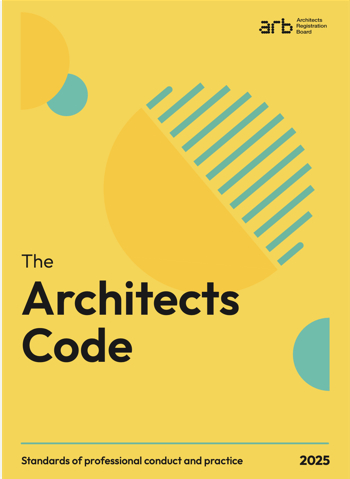Uniclass2
| This is an archive version of an article from the CPIc website, which was closed in 2025. CPIc (the Construction Project Information Committee) was formed from representatives of the major industry institutions and was responsible for providing best practice guidance on the content, form and preparation of construction production information. |
Contents |
2019/08/13: An Update On Uniclass 2015
Uniclass is a consistent classification structure for all disciplines in the construction industry. It contains tables classifying items of any scale from a large facility such as a railway, down to products such as a CCTV camera in a railway station.
It’s an essential way of identifying and managing the vast amount of information that’s involved in a project, and it’s a requirement for BIM projects, as set by the BS EN ISO 19650 series of standards.
For more information see: https://www.thenbs.com/our-tools/uniclass-2015
Uniclass2
Uniclass 2 was developed to produce a classification system for structuring information that is freely available for all participants throughout the life cycle of a project and beyond, which is endorsed by all construction and property bodies and professional institutions. It is dynamic, available online in various formats and managed by a team of experts who will monitor requests, update and control versioning.
The tables available in this tool are ready for use in applications to test their usability.
Search Uniclass2
The fully searchable Uniclass2 system is available for use at the link below:
https://www.designingbuildings.co.uk/wiki/Uniclass2_(Development_Release)_Classification_Tables
Uniclass2 by Construction Project Information Committee is licensed under a Creative Commons Attribution-NoDerivs 3.0 Unported License.
Uniclass Development Release Individual PDF Downloads
- Co Complexes to replace part of Table D – new revision June 2013
- En Entities to replace table E – new revision June 2013
- Ac Activities to partially replace Table D – new revision May 2013
- Sp Spaces to replace Table F – new revision May 2013
- EF Entities by Form – first public revision September 2013
- Ee Elements to replace Tables G and H – new revision June 2013
- Ss Systems new to Uniclass – new revision June 2013
- Pr Products to replace table L – new version May 2013
- ZZ CAD new to Uniclass
- PP Phases new to Uniclass
Reference Tables
For more information on the purpose of the Work Results Table, see “An Introduction To Uniclass2” by Ian Chapman, NBS Head of Specification.
- WR Work results to replace tables J and K – new revision February 2013
- WS Work results structure for specifications
BuildingSMART Data Dictionary
The BuildingSMART Data Dictionary (bSDD) is an ISO 12006-3 based ontology for the building and construction industry, which includes tables from the Uniclass classification system. For more information on the bSDD see http://bsdd.buildingsmart.org/
Open Data Certificate
The Uniclass and Uniclass2 systems are now certified as Open Data with the Open Data Institute (www.odi.org).
Related articles on Designing Buildings
Featured articles and news
RTPI leader to become new CIOB Chief Executive Officer
Dr Victoria Hills MRTPI, FICE to take over after Caroline Gumble’s departure.
Social and affordable housing, a long term plan for delivery
The “Delivering a Decade of Renewal for Social and Affordable Housing” strategy sets out future path.
A change to adoptive architecture
Effects of global weather warming on architectural detailing, material choice and human interaction.
The proposed publicly owned and backed subsidiary of Homes England, to facilitate new homes.
How big is the problem and what can we do to mitigate the effects?
Overheating guidance and tools for building designers
A number of cool guides to help with the heat.
The UK's Modern Industrial Strategy: A 10 year plan
Previous consultation criticism, current key elements and general support with some persisting reservations.
Building Safety Regulator reforms
New roles, new staff and a new fast track service pave the way for a single construction regulator.
Architectural Technologist CPDs and Communications
CIAT CPD… and how you can do it!
Cooling centres and cool spaces
Managing extreme heat in cities by directing the public to places for heat stress relief and water sources.
Winter gardens: A brief history and warm variations
Extending the season with glass in different forms and terms.
Restoring Great Yarmouth's Winter Gardens
Transforming one of the least sustainable constructions imaginable.
Construction Skills Mission Board launch sector drive
Newly formed government and industry collaboration set strategy for recruiting an additional 100,000 construction workers a year.
New Architects Code comes into effect in September 2025
ARB Architects Code of Conduct and Practice available with ongoing consultation regarding guidance.
Welsh Skills Body (Medr) launches ambitious plan
The new skills body brings together funding and regulation of tertiary education and research for the devolved nation.
Paul Gandy FCIOB announced as next CIOB President
Former Tilbury Douglas CEO takes helm.
UK Infrastructure: A 10 Year Strategy. In brief with reactions
With the National Infrastructure and Service Transformation Authority (NISTA).






